In Hebrew, Kol Emeth means “the voice of truth,” explains Stan Field, who, with his son Jess, leads Field Architecture. The Palo Alto, California–based firm recently completed the Kol Emeth synagogue in the city. “This spurred us to make sure everything was authentic.” Much of the project’s authenticity has to do with truth in materials—a lesson Stan learned studying with Louis Kahn at the University of Pennsylvania in the late 1960s—interpreted here in raw wood, steel, and stone. And the design is also genuine in its response to a difficult site, to the nature of its environment, and to its purpose as a spiritual center.
Kol Emeth replaces a synagogue built on this site in 1967, and expanded in 1972 and 1987, that its congregation of 1,500 members had outgrown. The 17,850-square-foot complex comprises two volumes on a triangular lot, framed by an expressway and a cemetery on its northeast hypotenuse and by houses along its west and south legs. The smaller volume is an administrative building, while the larger one includes a sanctuary and a social hall that open onto a shared outdoor court—which conveniently allowed for services during the pandemic. The sanctuary and hall are flanked by smaller spaces, including classrooms, a kitchen, and a room where children can play or pray.
In the main building, 12 timber columns support a perimeter steel frame, which in turn supports a flat roof made of structural insulated panels, and below that a slatted-wood canopy inspired by the draped form of a prayer shawl. Like most of the project’s components, these were built off-site for just-in-time delivery. This strategy, according to the architects, reduced the construction footprint on the property (thus protecting the existing vegetation), reduced waste by optimizing material production, and tightened the coordination between design and making. Field Architecture originally conceived the canopy as undulating across the entire building, but, as built, it curves just in the sanctuary, calling it out as a special place. Rather than swooping up into a traditional arch, the canopy bends in toward a central round table where the Torah is read. “The ceiling comes down, the ark is round, the seating is circular—it’s almost like a drop in a pond,” says Jess, “and everything emanates from that single point.”
The sanctuary is positioned so its ark faces east, toward Jerusalem. This created less-than-ideal daylighting conditions, which the architects addressed with a variety of glazed elements: transparent walls facing the courtyard, skylights baffled by the canopy, a clerestory, and tall windows that frame the ark and look onto planted grounds. “The filtered sunlight that comes in—in the morning, when we have our Saturday services—has a soothing quality that is very spiritual,” says David Booth, the congregation’s senior rabbi. During a recent visit, daylight produced a few color spectra that appeared (and soon disappeared) on walls and seats. “At a bar mitzvah the other day,” says Stan, “there was one on the bar mitzvah boy’s forehead.” Daylighting is supplemented with a variety of downlights, task lights, and ambient-light fixtures.
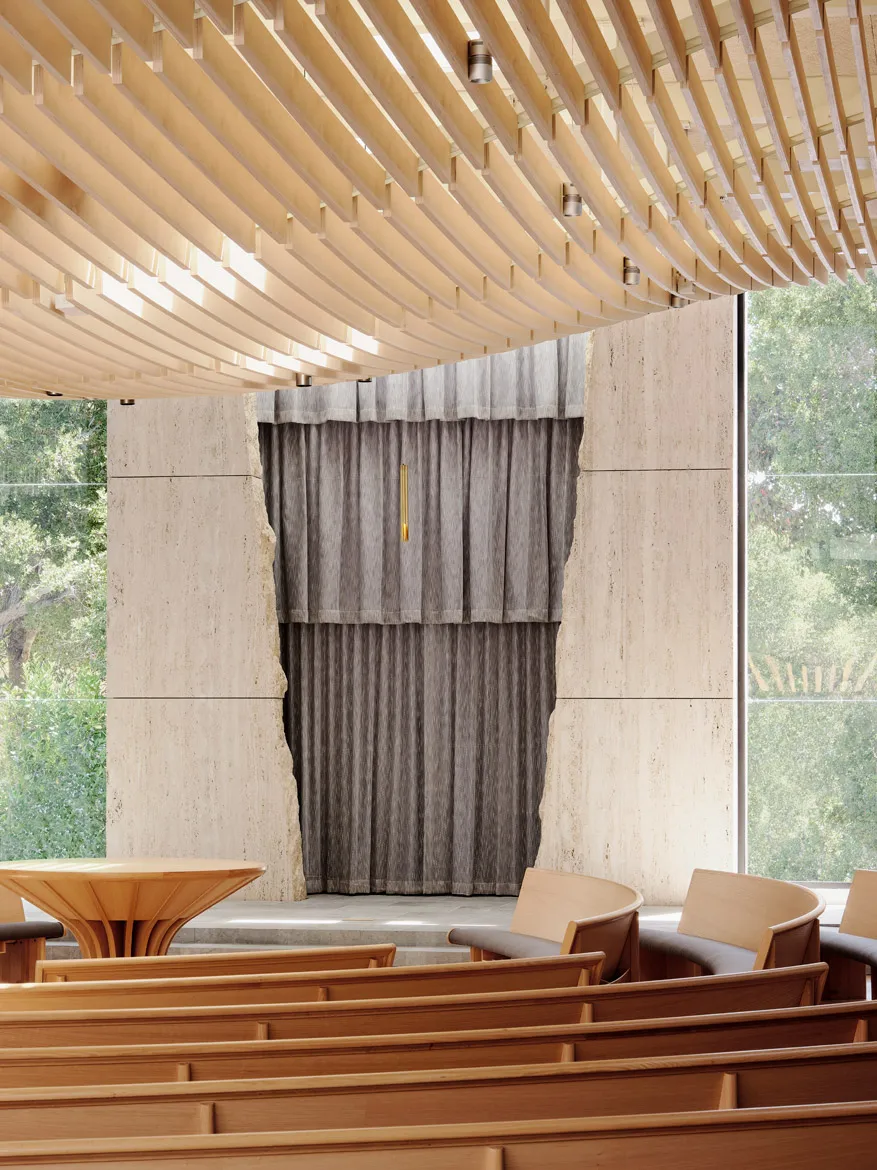
1
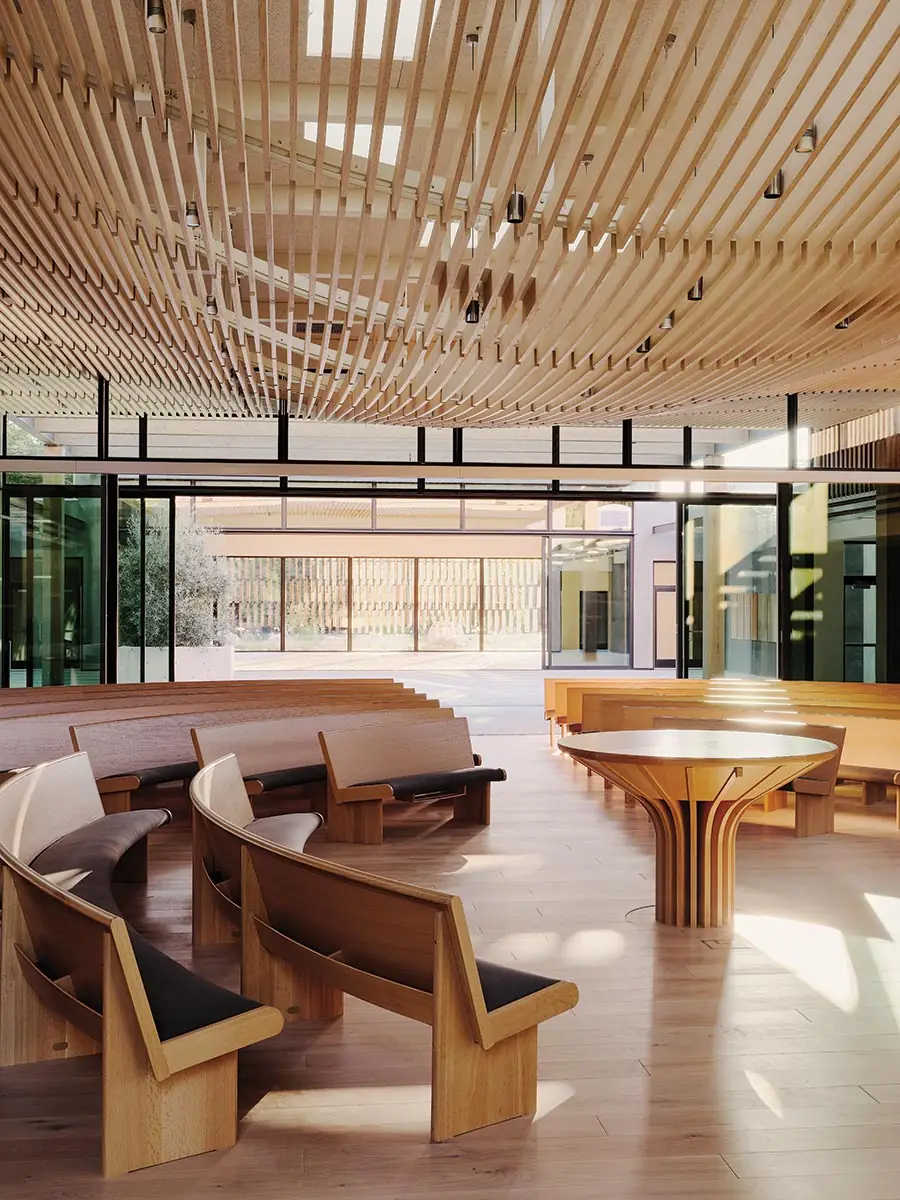
2
Positioned so its ark faces east toward Jerusalem, the main sanctuary has a canopy that bows above a central table where the Torah is read (1). The space looks onto a courtyard and a social hall beyond that (2). Photos © Joe Fletcher, click to enlarge.
To regulate low-angle light on the west facades of both the administration building and the social hall, Field Architecture built a lattice from 2,200 salvaged-timber pieces mounted to a steel frame. The architects set the rotation and gradient of each piece of wood to achieve the light conditions they wanted inside. This lattice runs the full length of the lot’s west side and acts as Kol Emeth’s identifying feature.
The lattice’s saved-from-landfill wood also serves as a symbol of the project’s sustainability. Kol Emeth is a LEED Platinum, net zero–energy building that uses no potable water for irrigation. Obtaining zero energy was relatively simple in sunny Palo Alto, Jess notes, through the installation of photovoltaic roof panels. Achieving net zero–water use, which entails harvesting rainwater and recycling graywater, was trickier because of California’s long annual dry period and current multi-year drought. Field Architecture managed this by replacing the site’s surface parking with an underground garage, freeing the area for planted surfaces that absorb water. “They are intensely used for biofiltration and rainwater harvesting,” says Jess of the grounds, “with robust storage capabilities along the entire perimeter.” Collected water irrigates on-site vegetation, including a community garden with drought-resilient native plants on the synagogue’s prominent west frontage.
Field Architecture’s truth-telling seems to have been effective. “The sanctuary is a wonderful contribution to sacred architecture,” rabbi Booth says. “The nature of the space has even changed the tenor of the interactions of the congregation. It’s been transformative, actually, in a wonderful way.”
Click drawing to enlarge
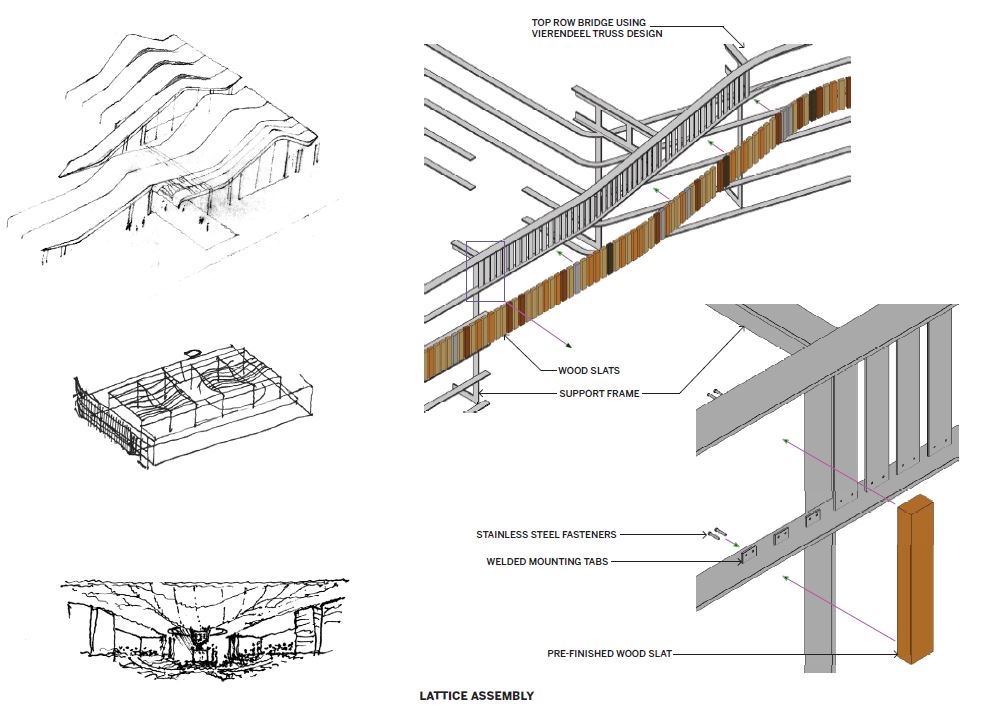
Credits
Architect:
Field Architecture — Stan Field, Jess Field, design principals
Architect of Record:
EID Architects
Engineers:
Lea and Braze (civil); Mar Structural Design (structural); Fard Engineers (m/e/p)
General Contractor:
Smith Hyder Construction
Consultants:
Loisos + Ubbelhode (lighting); Charles M. Salter Associates (acoustical); Green Building Services (LEED commissioning); GLS Landscape | Architecture (landscape); Spearhead (fabrication)
Client:
Congregation Kol Emeth
Size:
17,850 square feet aboveground; 41,500 square feet belowground parking
Cost:
Withheld
Completion Date:
June 2020
Sources
Hydro-phobic Stucco:
U-Stucco
Curtain Wall:
Western Window Systems
Permeable Pavers:
Belgard
Air Curtain:
Berner
PhotoVoltaic Panels:
Sun Power


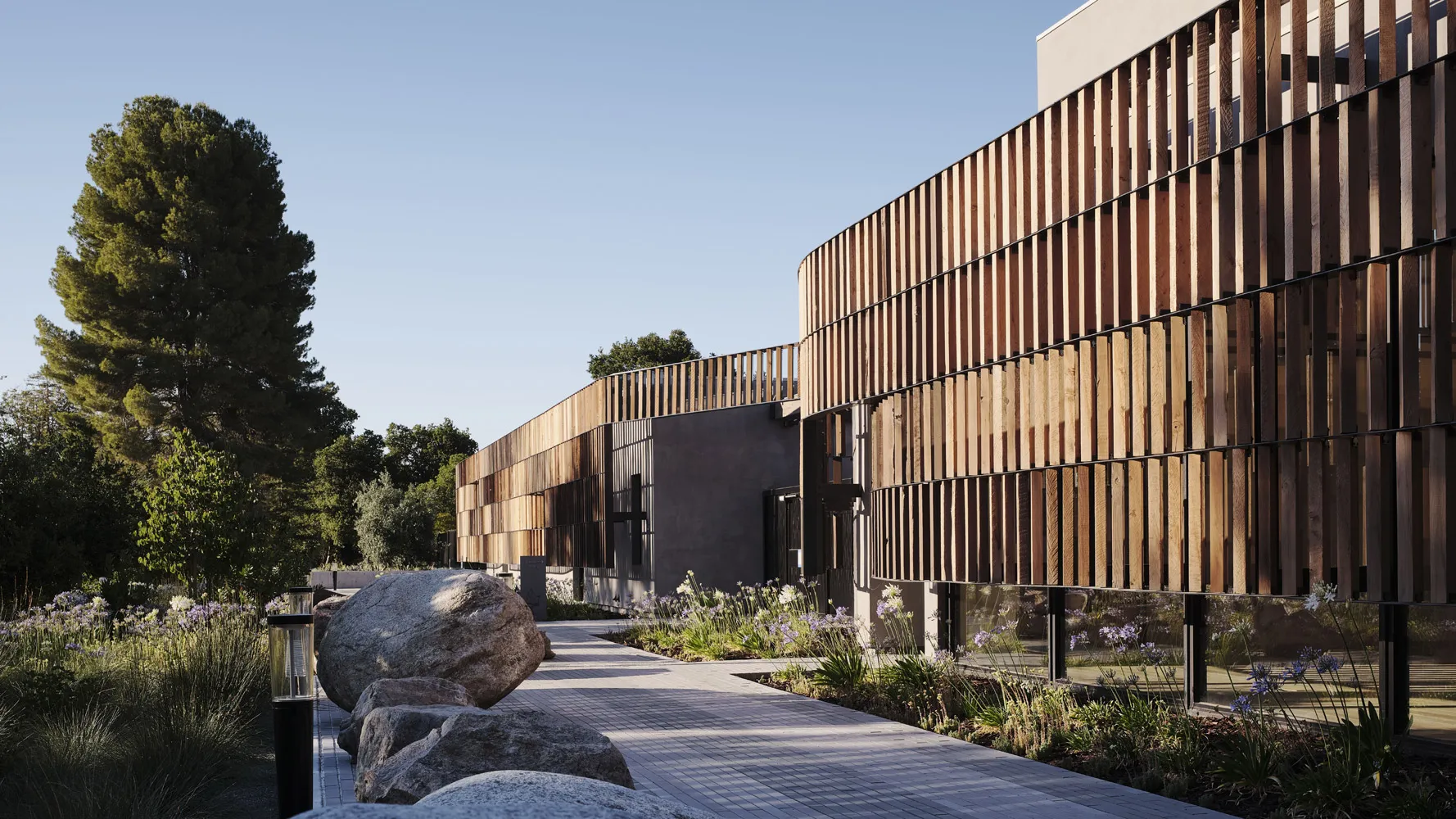
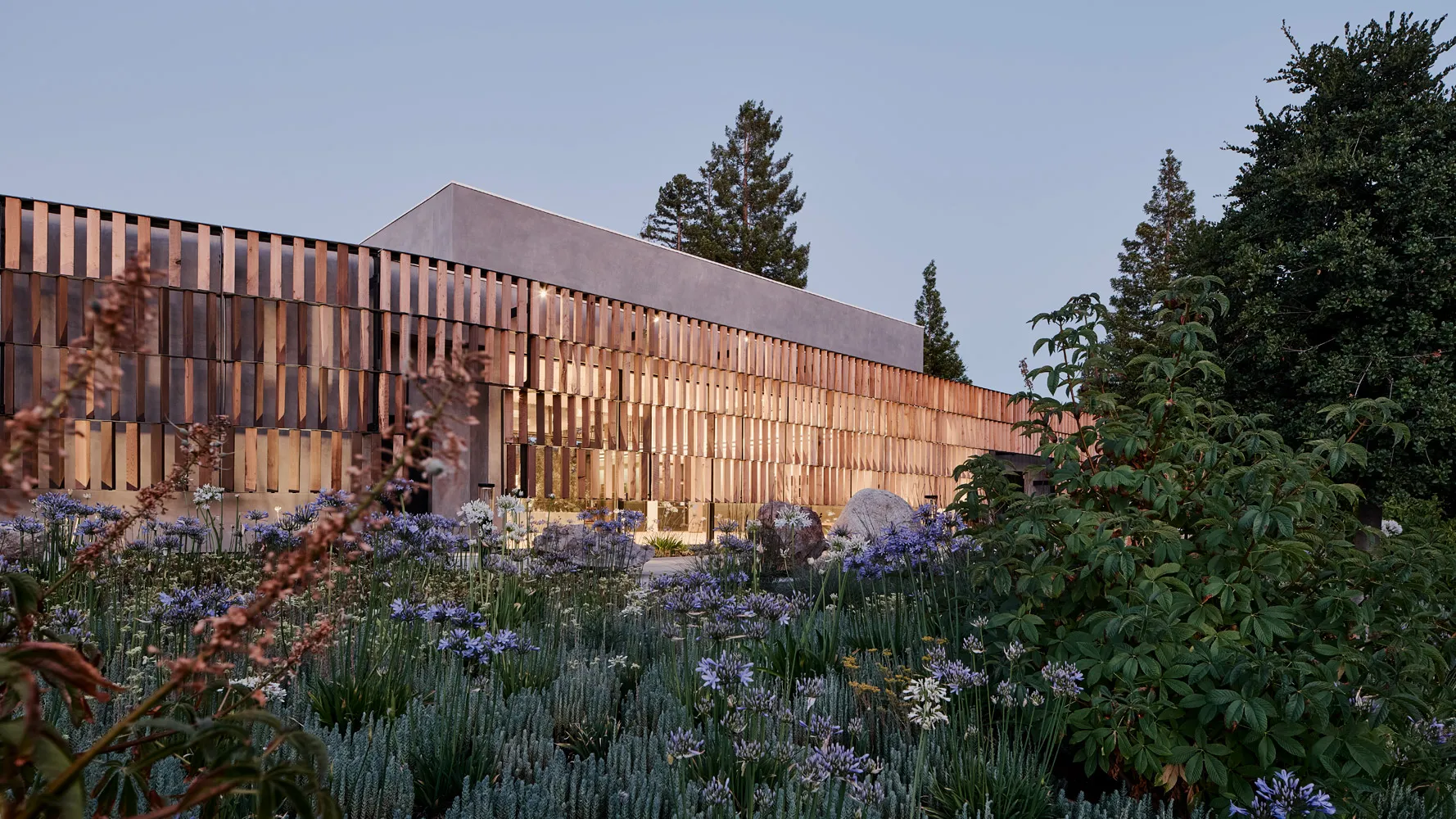

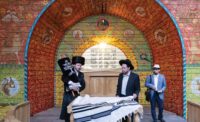
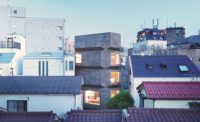
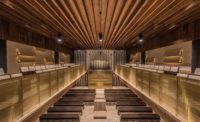
Post a comment to this article
Report Abusive Comment